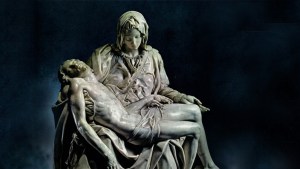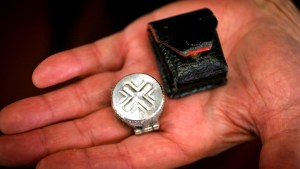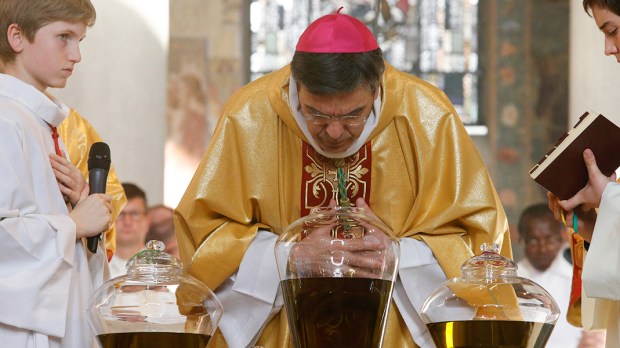Among the many liturgies celebrated during Holy Week, the Chrism Mass is one that few Catholics ever participate in. This is because the liturgy is always celebrated at the cathedral church of the diocese, presided over by the local bishop.
Traditionally this Mass was celebrated on Holy Thursday, though for pastoral reasons in the United States it is often moved to Monday or Tuesday of Holy Week, and in some cases is even celebrated on a different day during Lent.
All of the the priests of the diocese gather together for this Mass, and during it the bishop will consecrate the sacred oils used in the sacraments of Baptism, Confirmation, Anointing of the Sick, and Holy Orders. Each parish receives its annual supply of these oils at the Chrism Mass.
Pope Benedict XVI related some of the symbolism of this Mass in a homily given in 2010. He said, “In the Chrism Mass on Holy Thursday, the holy oils are at the center of the liturgical action. They are consecrated in the bishop’s cathedral for the whole year. They thus serve also as an expression of the Church’s unity, guaranteed by the episcopate, and they point to Christ, the true ‘shepherd and guardian’ of our souls.”
When commentating on the specific oils, Pope Benedict explained the significance of each and how they accompany us on our journey of faith.
In four sacraments, oil is the sign of God’s goodness reaching out to touch us: in baptism, in confirmation as the sacrament of the Holy Spirit, in the different grades of the sacrament of holy orders and finally in the anointing of the sick, in which oil is offered to us, so to speak, as God’s medicine – as the medicine which now assures us of his goodness, offering us strength and consolation, yet at the same time points beyond the moment of the illness towards the definitive healing, the resurrection (cf. Jas 5:14). Thus oil, in its different forms, accompanies us throughout our lives: beginning with the catechumenate and baptism, and continuing right up to the moment when we prepare to meet God, our Judge and Savior.
Furthermore, “the Chrism Mass, in which the sacramental sign of oil is presented to us as part of the language of God’s creation, speaks in particular to us who are priests: it speaks of Christ, whom God anointed King and Priest – of him who makes us sharers in his priesthood, in his ‘anointing,’ through our own priestly ordination.”
One of the additional aspects of the Chrism Mass is the annual renewal of priestly promises. With all of the priests of the local diocese present before the bishop, they renewal their fidelity to him and to Jesus Christ.
Another dimension to this Mass is how in the biblical narrative of Holy Week Jesus visits his friends at Bethany and Mary anoints him with precious oil, preparing him for his burial. In this way, the Chrism Mass recalls this episodes and points to what will happen later in the week.
The Chrism Mass is a beautiful celebration of unity and is meant to strengthen ties with a diocese, uniting all parishes under the guidance of its local shepherd. All lay people are encouraged to attend this liturgy and experience the beauty of the local church.

Read more:
A visual guide to Holy Week: Here’s what you need to know

Read more:
What is the Apostolic Pardon and why is it important?

